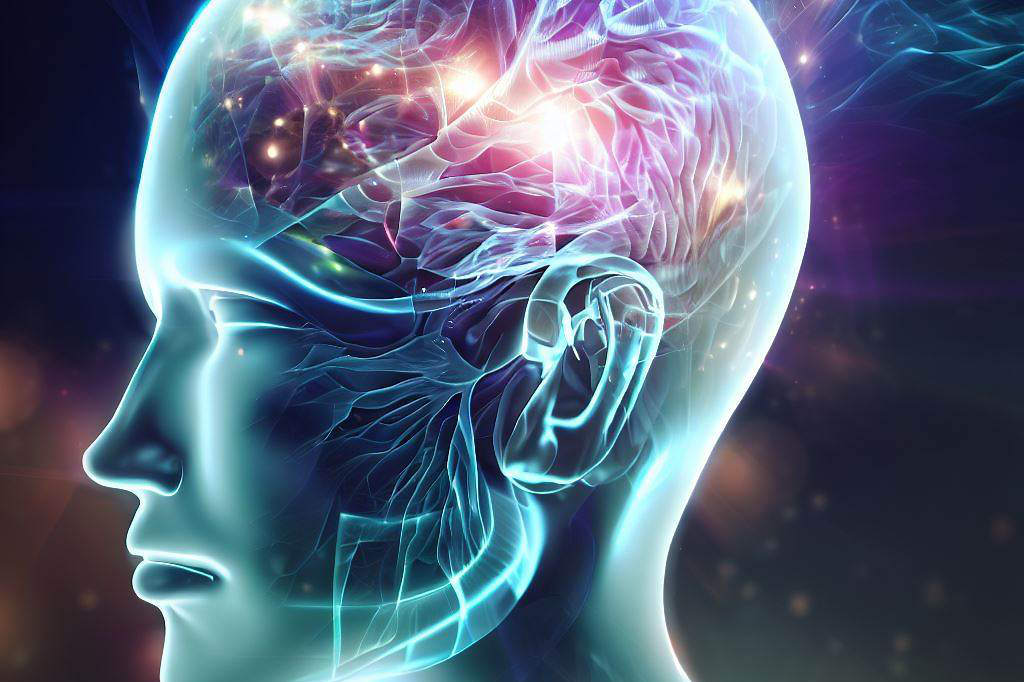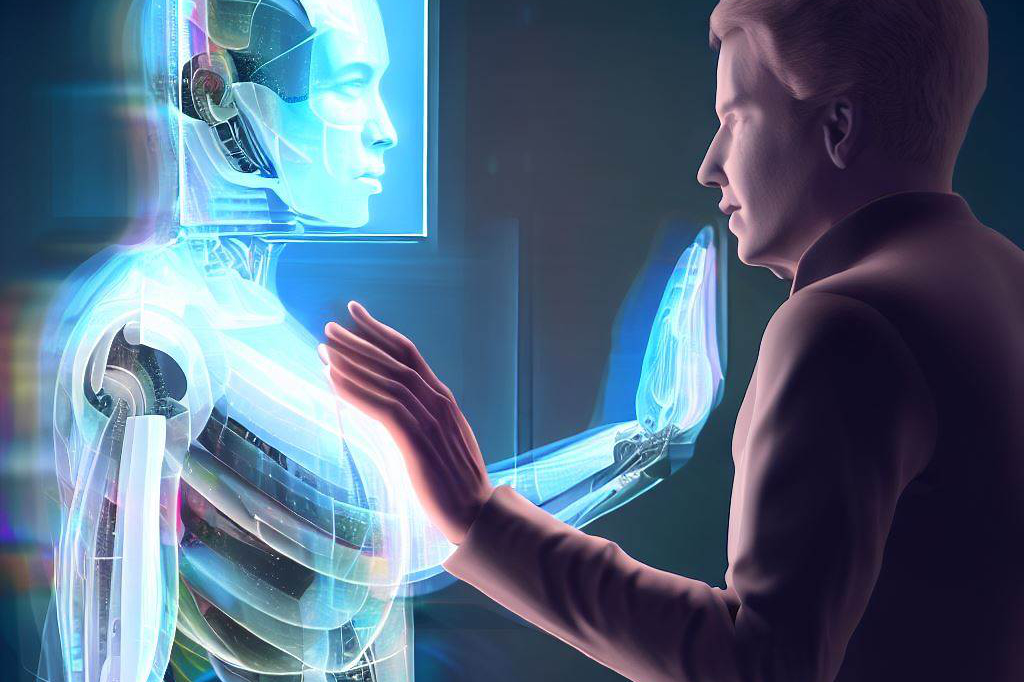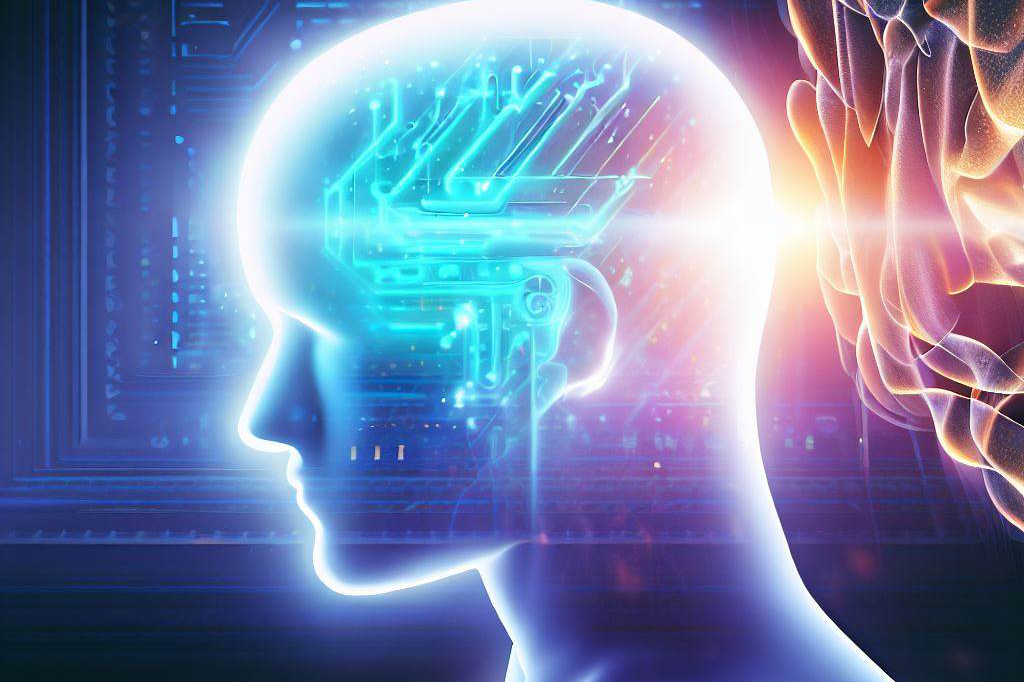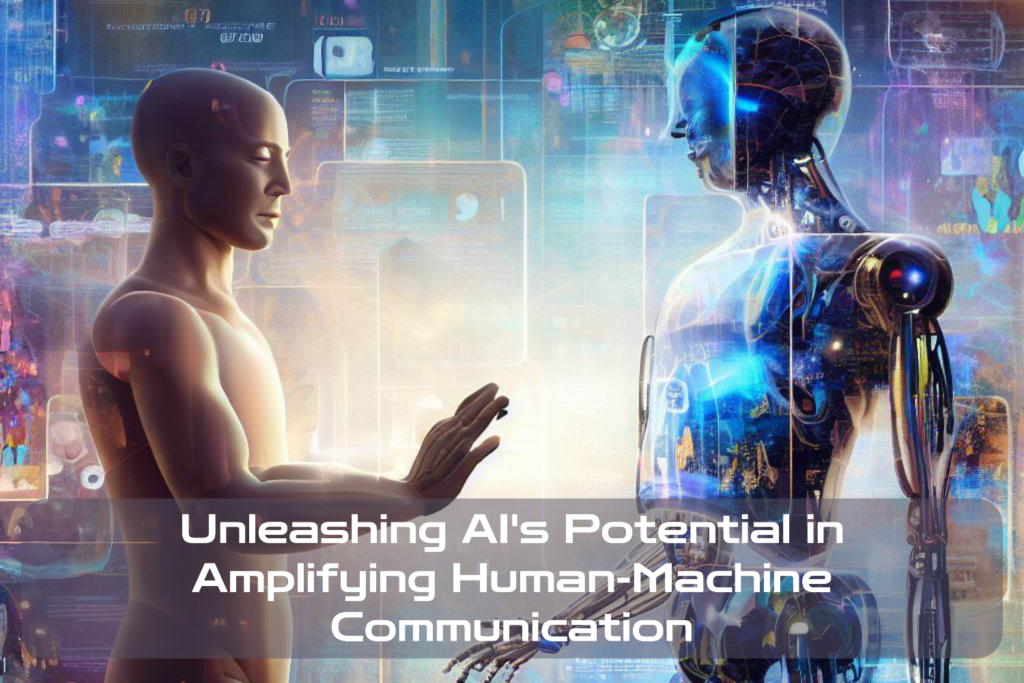The Rise of Artificial Intelligence in Communication Enhancement
The world we live in today is witnessing tremendous advancements in technology, and one of the most significant breakthroughs is the development of Artificial Intelligence (AI). AI refers to the simulation of human intelligence in machines that are programmed to think and learn like humans.
With its ability to process vast amounts of data, analyze patterns, and make decisions, AI has revolutionized various industries, including communication. In this article, we will delve into the ways in which AI can enhance communication between the human brain and computers.
The Fascinating Concept of AI
To fully grasp the potential impact of AI on communication enhancement, it is crucial to understand its fundamental concept. At its core, AI involves designing intelligent systems capable of performing tasks that typically require human intelligence.
These tasks include
- speech recognition,
- problem-solving,
- learning from experience,
- and decision-making.
Through machine learning algorithms and neural networks inspired by the structure and functions of our own brains, AI systems can process complex information rapidly and efficiently.
The Significance of Effective Communication

Effective communication plays a pivotal role not only in our daily interactions but also in various professional fields such as healthcare, education, business, and research. The ability to communicate seamlessly between humans and computers has become increasingly vital as our reliance on technology grows.
While traditional interfaces like keyboards or touchscreens have served us well thus far, there are limitations to how efficiently we can convey our thoughts or access information through these means alone. Imagine a world where individuals with visual impairments can navigate digital platforms effortlessly or where language barriers no longer hinder effective global collaboration.
This is precisely where AI comes into play, bridging the gap between human brains and computers. By enhancing communication channels through advancements such as Natural Language Processing (NLP) or Brain-Computer Interfaces (BCIs), AI has the potential to revolutionize the way we interact with technology, unleashing a new era of possibilities.
In the following sections, we will
- explore the intricacies of the human brain,
- delve into specific AI technologies used for communication enhancement,
- discuss how AI can enhance cognitive abilities,
- and address ethical considerations and challenges related to this fascinating field.
Stay tuned as we embark on an enlightening journey where human intelligence converges with artificial intelligence to reshape communication as we know it.
Understanding the Human Brain

Exploring the complexity and intricacies of the human brain
The human brain, with its remarkable complexity, remains one of the most fascinating structures in existence. Comprised of approximately 86 billion neurons, each interconnected through a vast network of synapses, our brains enable us to think, feel, and communicate.
This intricate organ allows us to process information at an astonishing speed and adapt to our ever-changing environment. At its core, the human brain consists of different regions responsible for various functions such as perception, memory, language processing, and decision-making.
The cerebral cortex, the outermost layer of the brain associated with higher cognitive functions, plays a crucial role in communication. It is divided into different lobes:
- frontal lobe for executive functions and problem-solving;
- temporal lobe for auditory processing;
- parietal lobe for sensory integration;
- and occipital lobe for visual perception.
How neural networks function in transmitting information
Neural networks within the human brain serve as the fundamental units responsible for transmitting information throughout this complex system.
A neuron consists of three main components:
- dendrites that receive signals from other neurons or sensory organs;
- a cell body that processes these signals;
- and an axon that transmits signals to other neurons.
Communication between neurons occurs through electrical impulses called action potentials.
When a neuron receives a sufficient amount of input from connected neurons or sensory organs through its dendrites, it generates an action potential that travels down its axon. At synapses – tiny gaps between neurons – neurotransmitters are released by one neuron’s axon terminal and bind to receptors on another neuron’s dendrites.
This electrochemical process enables the rapid transmission of information within neural networks. By modulating the strength of connections between neurons (synaptic plasticity), our brains form intricate pathways that allow us to experience sensations, process thoughts, and engage in complex behaviors.
Understanding the complexity and functioning of the human brain is essential when exploring how AI can enhance communication between our minds and computers. By leveraging this knowledge, researchers can develop strategies and technologies that bridge the gap between these two powerful entities, opening up exciting possibilities for advancements in communication and cognitive capabilities.
The Role of AI in Communication Enhancement

Natural Language Processing (NLP): Understanding spoken and written language
The field of Natural Language Processing (NLP) has experienced remarkable advancements in recent years, revolutionizing the way humans interact with computers.
NLP focuses on enabling computers to understand, interpret, and respond to human language through complex algorithms and machine learning models. By utilizing syntactical, semantic, and contextual analysis techniques, AI-powered systems can comprehend the intricacies of spoken and written language.
One key aspect of NLP is speech recognition technology. Through sophisticated algorithms, computers can transform spoken words into text by analyzing audio signals.
This capability enables voice assistants like Siri or Alexa to understand human commands and respond accordingly. Additionally, NLP-driven systems have become increasingly accurate in their ability to accurately transcribe verbal conversations, facilitating real-time transcription services for various applications such as conference calls or interviews.
Another significant contribution of NLP is its role in improving machine translation capabilities. In today’s interconnected world, where communication across different languages is crucial, AI-powered translation systems have made remarkable progress.
These systems employ deep learning techniques to analyze vast amounts of multilingual data and improve accuracy over time. Real-time translation tools such as Google Translate now provide instant translations for both written text and spoken words between multiple languages.
Brain-Computer Interfaces (BCIs): Connecting the human brain directly to computers
Brain-Computer Interfaces (BCIs) represent an exciting frontier in communication enhancement between the human brain and machines. BCIs establish a direct connection between the brain’s neural activity and external devices like computers or prosthetic limbs through cutting-edge technology. This revolutionary field holds immense potential for individuals with disabilities by granting them newfound abilities to interact with their surroundings.
One significant application of BCIs is in neuroprosthetics – artificial limbs controlled directly by the user’s mind. By implanting electrodes into the brain’s motor cortex, individuals with limb loss can regain control over prosthetic limbs with remarkable precision.
Through the interpretation of neural signals, AI algorithms can decipher the user’s intentions and translate them into movements in real-time. This breakthrough has not only restored functionality to those who have experienced limb loss but has also provided a sense of autonomy and independence.
Furthermore, BCIs hold promise for individuals with communication impairments such as locked-in syndrome or severe paralysis. By using implanted sensors or non-invasive techniques like electroencephalography (EEG), AI-enabled BCIs can interpret brain signals associated with intended movements or speech.
This technology allows users to communicate by selecting letters or words on a screen through their thoughts alone, greatly enhancing their ability to express themselves and interact with the world. These advancements in BCIs highlight how AI is bridging the gap between the human brain and computers, presenting transformative opportunities for communication enhancement and improved quality of life for individuals facing physical limitations.
Advancements in neuroprosthetics for individuals with disabilities

Neuroprosthetics refers to devices that interact directly with the nervous system to restore lost sensory or motor functions. With the integration of AI, these devices have become increasingly sophisticated and capable of providing enhanced functionality for individuals living with disabilities.
Artificial limbs controlled by neuroprosthetics have made significant strides in recent years, thanks to AI-driven algorithms that enable precise control and natural movement. Prosthetic hands equipped with advanced sensors can detect signals from residual nerves in an individual’s arm.
These signals are then converted into specific movements through machine learning algorithms, allowing users to perform complex tasks such as grasping delicate objects or typing on a keyboard. Moreover, neural implants combined with AI have shown promising results in restoring sensory feedback for amputees.
Through innovative techniques like sensory substitution or direct neural stimulation, these systems aim to recreate sensations associated with touch, temperature, and even pain. By providing users with a sense of touch and proprioception, AI-enhanced neuroprosthetics can greatly improve the functionality and overall experience for individuals living with limb loss.
The advancements in neuroprosthetics underscore the profound impact of AI on enhancing communication between the human brain and computers. By seamlessly integrating with the body’s neural system, these technologies are redefining what was once considered impossible, enabling individuals with disabilities to regain control over their physical abilities and interact more effectively with their environment.
Enhancing Cognitive Abilities through AI

Machine Learning algorithms for cognitive enhancement
One of the remarkable ways that AI can enhance communication between the human brain and computers is by utilizing machine learning algorithms to enhance cognitive abilities. These algorithms have shown great promise in improving memory retention and recall, two crucial aspects of human cognition.
By analyzing vast amounts of data, AI systems can identify patterns, optimize learning processes, and provide personalized recommendations for better memory consolidation. For instance, AI-powered applications can intelligently schedule revision sessions based on an individual’s learning curve, maximizing their ability to retain information over time.
Enhancing decision-making processes
AI also has the potential to significantly enhance decision-making processes. Through sophisticated algorithms that incorporate probabilistic models and deep neural networks, machines can analyze complex data sets much more efficiently than humans. This allows for more informed decision-making in a variety of domains, such as finance, healthcare, and business strategy.
Furthermore, AI systems can assist individuals by providing real-time analysis of relevant data points when faced with critical decisions. By leveraging this technology effectively, humans can benefit from improved accuracy and increased efficiency in their decision-making.
Augmented Reality (AR) and Virtual Reality (VR)
Another exciting aspect of AI’s contribution to enhancing communication between the human brain and computers lies in the realms of augmented reality (AR) and virtual reality (VR). These immersive technologies offer unique opportunities for enhanced learning and communication experiences. AR overlays digital information onto the real world through devices like smartphones or smart glasses, enabling individuals to access relevant information instantly.
VR provides simulated environments that allow users to engage with different scenarios realistically. Both AR and VR have immense potential for improving problem-solving skills by creating realistic simulations that challenge users to think critically and apply their knowledge effectively.
Ethical Considerations and Challenges

Privacy concerns related to accessing brain data
While the advancements in AI and their impact on communication between the human brain and computers are remarkable, they also raise significant ethical considerations. One of the primary concerns is related to privacy, particularly when it comes to accessing brain data.
As AI technologies develop interfaces that directly interact with the human brain, the question of who has access to this sensitive information becomes essential. Striking a balance between leveraging neuroscientific insights for progressive purposes and protecting individuals’ privacy rights will be crucial as this field evolves.
Final Thoughts
AI holds immense potential for enhancing communication between the human brain and computers by improving cognitive abilities and providing immersive experiences through technologies like AR and VR. Machine learning algorithms can optimize memory retention, enabling individuals to learn more effectively.
Additionally, AI systems can enhance decision-making processes by analyzing complex data sets efficiently. However, along with these advancements come ethical considerations surrounding privacy concerns related to accessing brain data.
By addressing these challenges responsibly and ethically, society can embrace AI’s potential while ensuring individual rights are respected. The future of enhanced communication with AI is exciting and promises a world where humans can collaborate effectively with intelligent machines in unprecedented ways.

C M, a seasoned editor, journalist, and consultant, is deeply fascinated by the convergence of technology, space, and the future of humanity.
With a particular interest in transhumanism, futurology, and the philosophical and ethical dimensions of these domains, C M serves as the lead contributor to TranscendSphere and SpaceSpotlight.
When not penning insightful articles on these rapidly evolving fields, C M indulges in their love for podcasts and books, proudly embracing their status as a ‘Happy Nerd Extraordinaire!’





